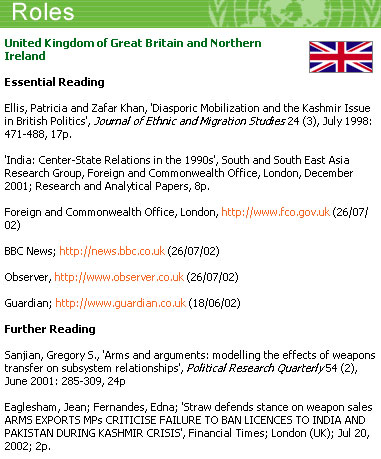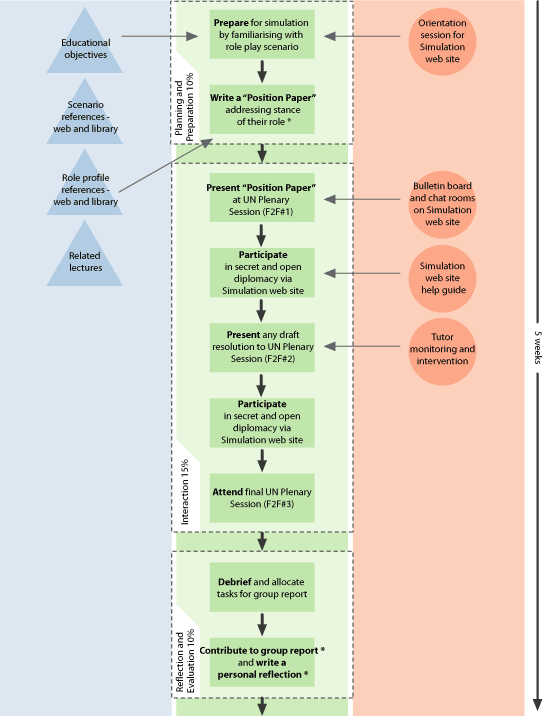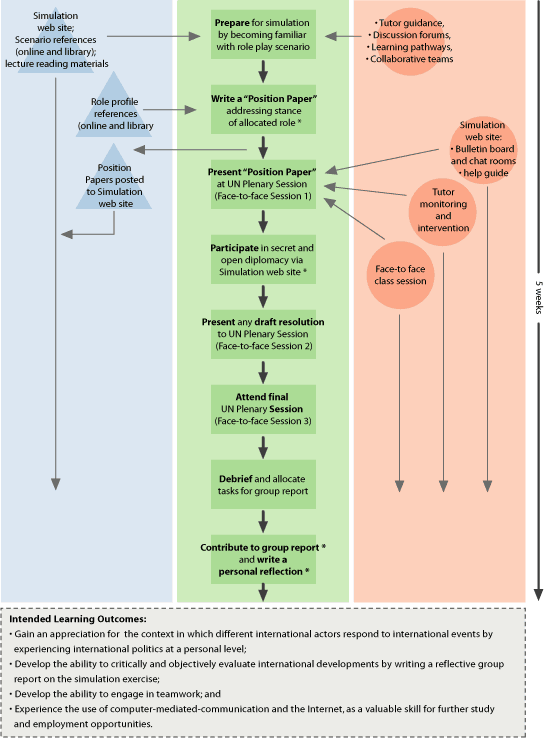|
ACCESSIBLE RESOURCES
The first phase of the activity sees students preparing for
the role-play, including writing a position paper for their
role. To facilitate understanding of the role and formulation
of the position paper, students are provided with electronic
and library references to resources. Some resources are general
to the whole scenario, while others are specific to each role.
The collection of position papers written by all members
of the group will form a set of resources shared by the group
of students at the beginning of the learning activity.
The role-play simulation also resides in the context of
a unit on international politics. Students are concurrently
attending lectures that include topics such as international
diplomacy and relations. Students will use these lectures
as well as the role-specific resources during the Interaction
phase of the simulation.
During the course of the Interaction phase, the lecturer
will insert "Press Releases" into the mix. As in
the real world, some of these are genuine, while some are
bogus and mischievous.
Simulation Builder underpins the ICT component of the learning
design. It is a web tool that facilitates the creation of
customised role-play simulations.
RESOURCES IN CONTEXT
The electronic role-specific resources are real political
documents made available on the official web sites of the
various states and agencies. While these documents are often
long and dense, it is significant that they are used as students
appreciate they are real.
The unpredictable Press Release interventions from the lecturer
add a hint of risk and real-life randomness to the momentum
of the learning activity.
The fact that this activity resides in a unit in which conventional
lectures are used is significant as the personal reflections
of students often express an appreciation of the relationship
between the material covered in lectures and the experience
gained through the role-play simulation.
VARYING THE RESOURCE SET
The Internet-based customised discussion facility that is
provided through Simulation Builder is important. In the first
instance, Simulation Builder allows for creation of an engaging
interface. More importantly though, Simulation Builder enables
discussion topics with various configurations to be created
- topics with messages specific to groups of students, topics
enabling private messages between students, topics enabling
group to group communications.
While Simulation Builder provides these facilities, the
learning design can be implemented with alternative technologies
such as email, a learning management system such as WebCT,
or Fablusi.
Two screen shots that illustrate the Simulation Builder interface
are provided below.


|




